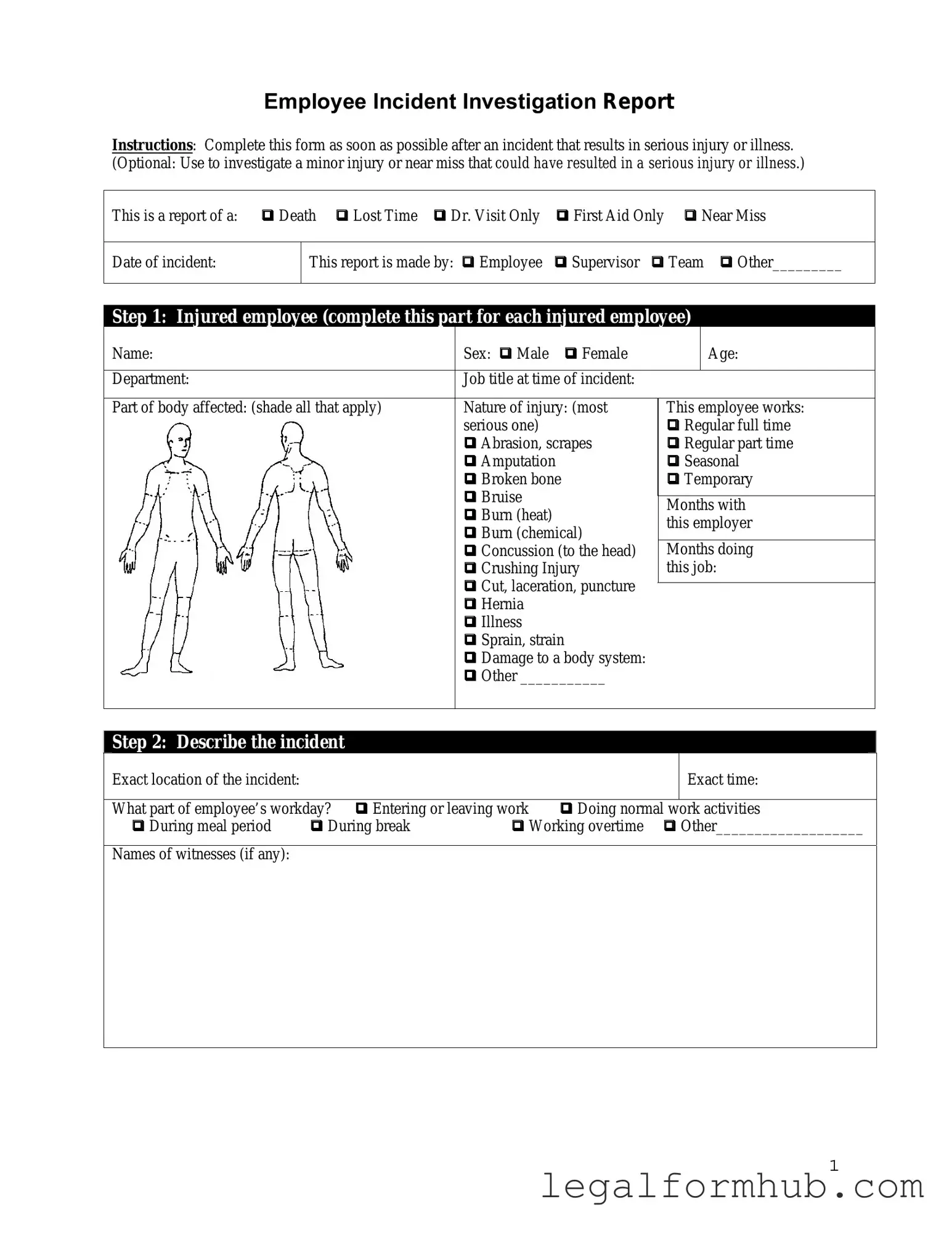The Incident Report is a crucial document in workplace safety. Like the Employee Accident Report, it captures details about an event that could lead to injury or property damage. Both forms aim to provide a clear account of what happened, who was involved, and the circumstances surrounding the incident. This information helps employers address safety concerns and prevent future occurrences.
The Workers' Compensation Claim form is another document closely related to the Employee Accident Report. When an employee gets injured on the job, they may need to file a claim to receive benefits. This form requires information about the injury, including its cause and the events leading up to it. The details from the Accident Report often support the claim, making it essential for both the employee and the employer.
The Safety Inspection Report is similar in that it focuses on identifying hazards in the workplace. While the Employee Accident Report deals with incidents that have already occurred, the Safety Inspection Report aims to prevent accidents by identifying potential risks. Both documents work together to enhance workplace safety by documenting issues and guiding corrective actions.
The First Aid Report serves a specific purpose in documenting immediate care given to an injured employee. This document records the nature of the injury and the treatment provided. Like the Employee Accident Report, it emphasizes the importance of timely and accurate reporting. Together, these reports ensure that all necessary information about an injury is captured and addressed.
The Near Miss Report is another important document that is similar to the Employee Accident Report. This form is used to document incidents where an accident almost occurred but did not result in injury. Reporting near misses helps organizations understand potential hazards and improve safety protocols. Both reports contribute to a culture of safety by encouraging reporting and analysis of incidents.
The OSHA Log of Work-Related Injuries and Illnesses is a federal requirement for many employers. This log tracks workplace injuries and illnesses over the year. The information contained in the Employee Accident Report feeds into this log, ensuring compliance with regulations. Both documents serve to maintain a record of workplace safety and highlight trends that may need addressing.
The Claim for Benefits form is used when an employee seeks compensation for work-related injuries. Similar to the Workers' Compensation Claim form, it requires detailed information about the injury and circumstances. The Employee Accident Report provides supporting documentation that can strengthen the claim, making it vital for both employees and employers during the claims process.
The Return to Work Agreement is another document that often follows an Employee Accident Report. Once an employee is injured, this agreement outlines the terms under which they can return to work. It may include modified duties or hours. Both documents aim to ensure a smooth transition back to work while prioritizing the employee’s health and safety.
Understanding the legal requirements surrounding tenant eviction is crucial, and resources such as the arizonapdfs.com/notice-to-quit-template provide valuable guidance for landlords seeking to ensure compliance with state regulations while handling rental agreements and tenant communication.
The Medical Report is a document prepared by healthcare professionals following an injury. It provides a detailed account of the medical treatment received and the employee's condition. This report complements the Employee Accident Report by offering a professional perspective on the injury. Together, they provide a comprehensive view of the incident and its aftermath.
